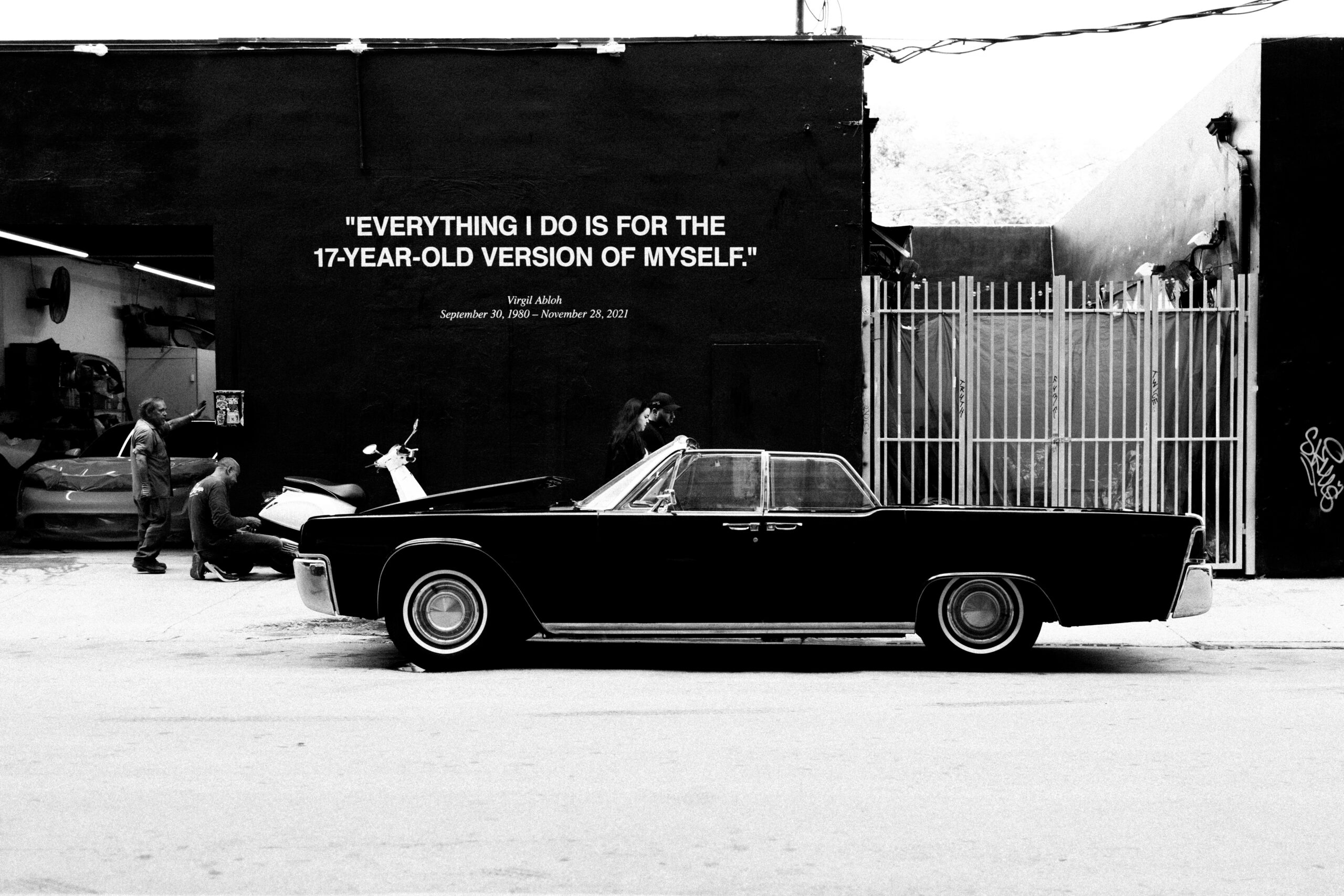What’s left of Virgil Abloh? Four years after his death, the question still stings. Will he be remembered as a pop icon—Warhol with sneakers, Frida with a hoodie—or as someone who still has something urgent to say about our world?
The new exhibition Virgil Abloh: The Codes, at the Grand Palais, is the first big European retrospective since his passing. It brings together the many parts of his work in one space. Yet not everyone is convinced. On Instagram, journalist Patrick Thévenin called it “a big grab bag, closer to a pop-up store than a real exhibition,” pointing to a lack of depth, coherence, and archival context—“scenography almost absent, just a few labels and basta.” For him, the only thread that stood out was Abloh’s obsessive relationship with sound.
Maybe that’s the challenge: when you package a practice like Abloh’s as spectacle, you risk losing its texture. But that texture is still out there—especially in his books. From scrappy zines to glossy catalogs, from manifestos to silk-bound tomes, Abloh used publishing as a manifesto and a playground. Books slowed him down. They let him hack culture. They left a paper trail of ideas.
That’s the story we wanted to follow: Abloh’s library, page by page.
You Cut Me Off (2016)
This self-published photo-book was created for Off-White’s AW16 Paris runway show and released at Colette. It documents the hour before and after the show through the lens of Piotr Niepsuj, a close friend and collaborator of Virgil Abloh. Its experimental layout—collage, layered imagery, scattered fragments of text—echoes the DIY culture of underground zines and highlights Abloh’s early editorial approach. More than simple record of a fashion event, it stands as a tangible expression of his creative vision and a first attempt to capture process in print. « I don’t want to just leave it up to the clothes. I want people to know my thoughts process, » Abloh told Vogue. This debut publishing project laid the foundation for his evolving engagement with different audiences and mediums.
Print run: 150 numbered copies
Publisher: Off-White
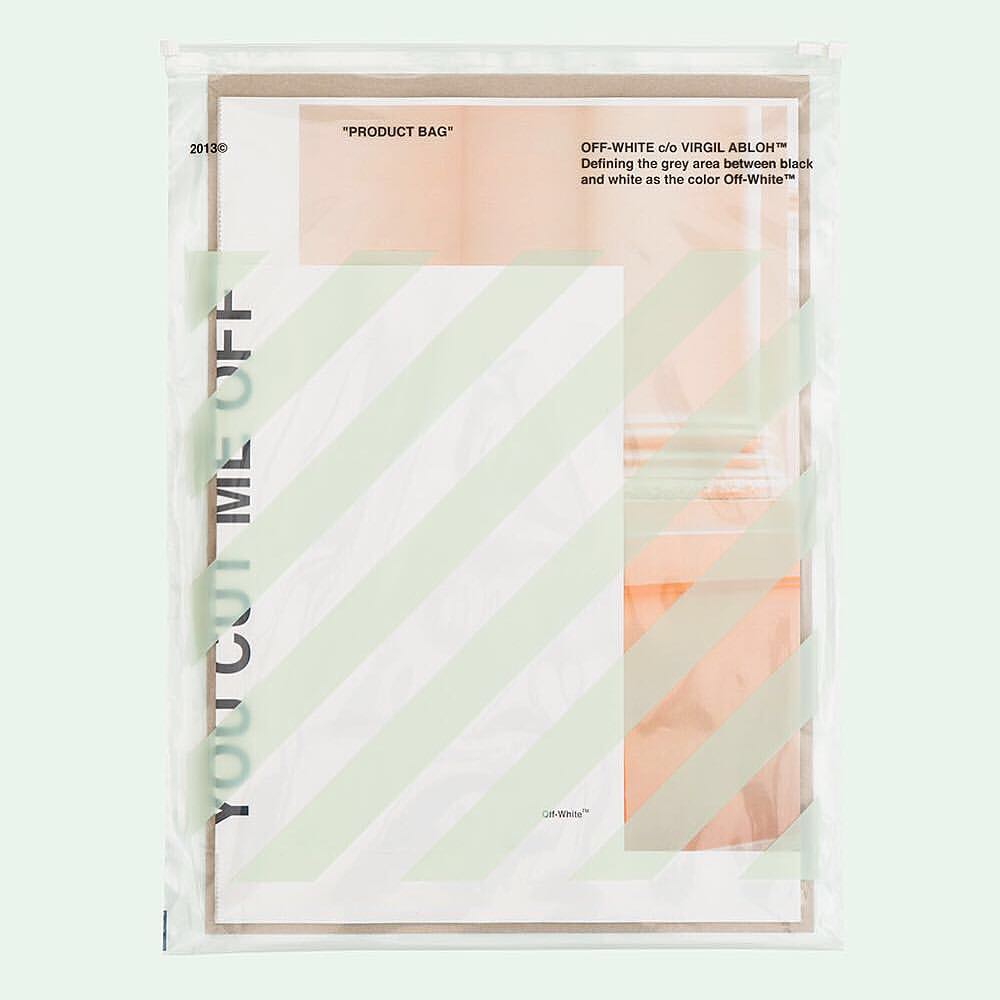
Virgil Abloh: The Incidents. “Insert Complicated Title Here” (2018)
This book transcribes Virgil Abloh’s 2017 lecture at Harvard’s Graduate School of Design, introduced by critic Oana Stanescu. In it, Abloh unpacks his “DNA”—his education, design vision, and creative process—while reversing the Q&A format by asking the audience about their own. Launched at the 2018 Venice Architecture Biennale and printed live at Grafiche Veneziane by Virgil himself, who created a new cover with his hand-written quotes and tags, turning the event itself into part of the book. The publication combines academic tone with Abloh’s playful voice, from offhand laptop remarks to reflections on design as “the freshest medium of our time.” As an object, it marks a shift from DIY zines to institutional recognition, formalizing his ideas and reinforcing books as platforms for dialogue and theory.
First edition of unique “Insert Complicated Title Here” covers
Print run: 500 copies
Publisher: Grafiche Veneziane
Second edition
Print run: Unknown
Publisher: Sternberg Press
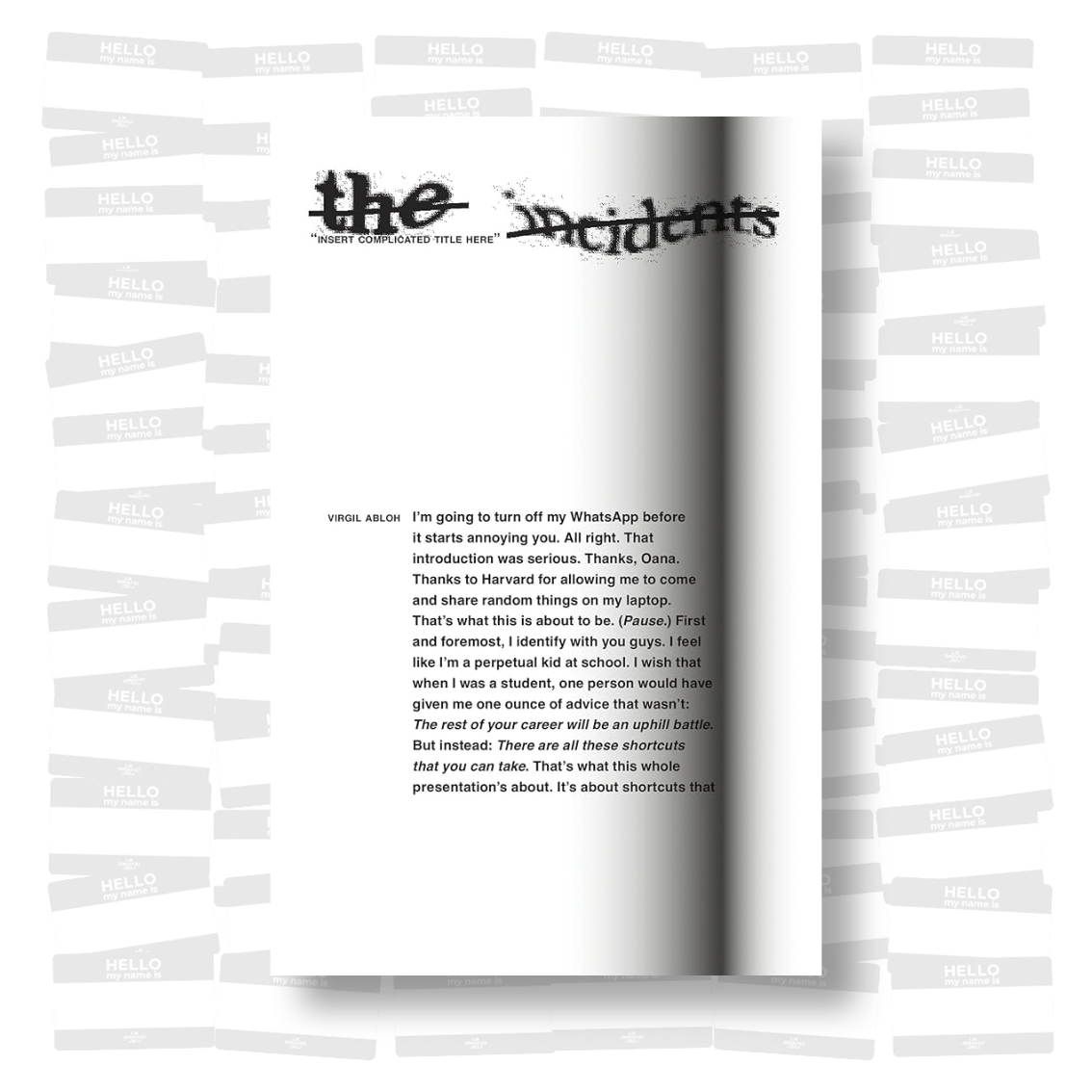
Efflorescens (2019)
Published with Abloh’s installation at Galerie Kreo, this fanzine gathers visual fragments inspired by brutalist forms and nature. Its pages mix photography, design notes, and tactile gaps meant for plants, echoing graffiti aesthetics and zine culture. Limited and experimental, it embodies a hybrid stage where Abloh bridged underground practices and institutional spaces. More than a catalog, it functions as both object and document, expressing his vision of design as a “language of subversion” accessible to both insiders and outsiders.
Print run: 500 copies
Publisher: Innen
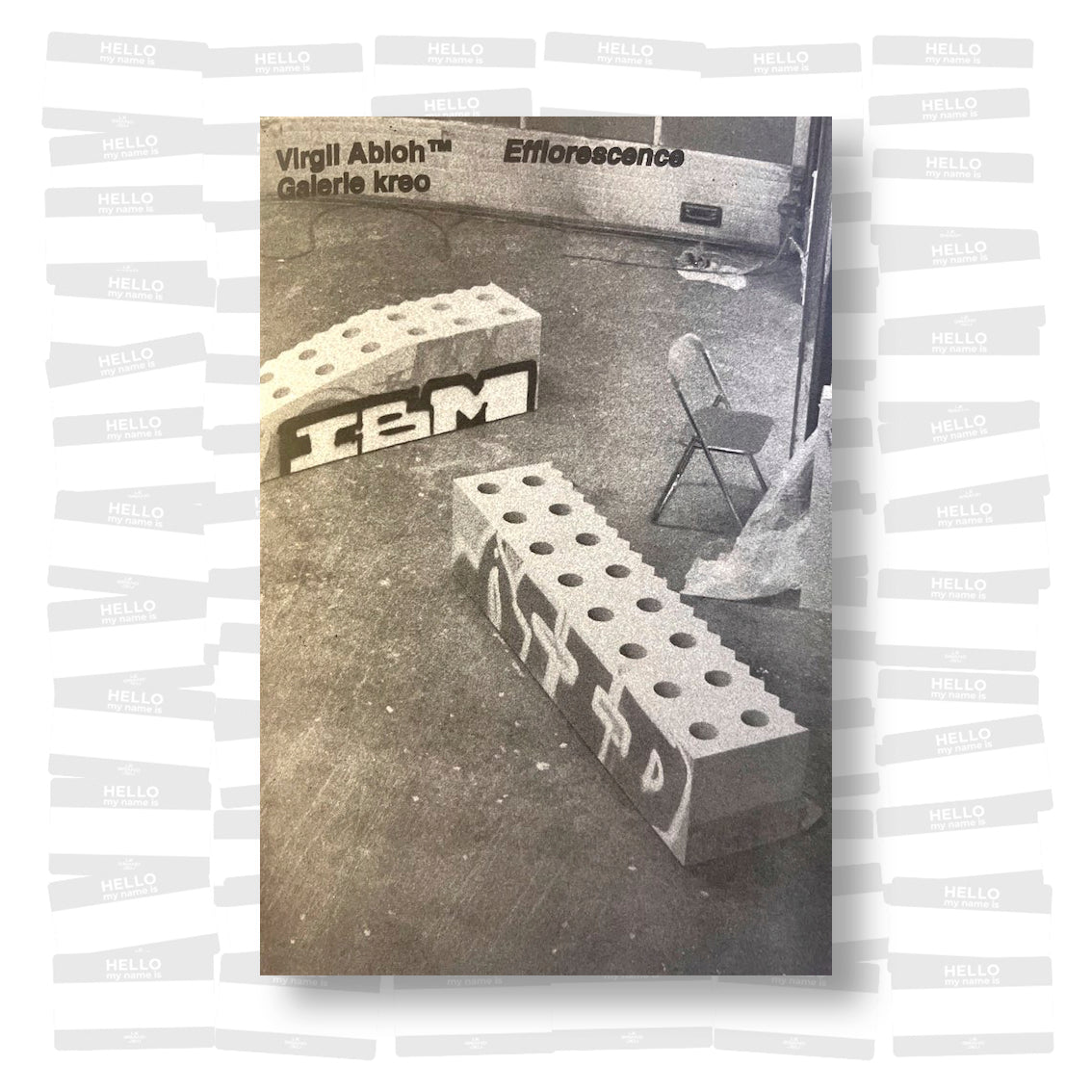
Figures of Speech (2019)
This 500-page compendium accompanied Abloh’s landmark touring exhibition, serving as both catalog and user’s manual to his multidisciplinary work. Essays, interviews, and archives trace his career across fashion, art, design, and music, while hundreds of images—from prototypes to behind-the-scenes files—map his process. Structured around sections like Fashion, Music, and Art, the book presents Abloh as a cultural polymath. More than a retrospective, it is an expansive object of record, cementing his full institutional recognition and global influence.
Print run: Unknown
Publisher: DelMonico Books
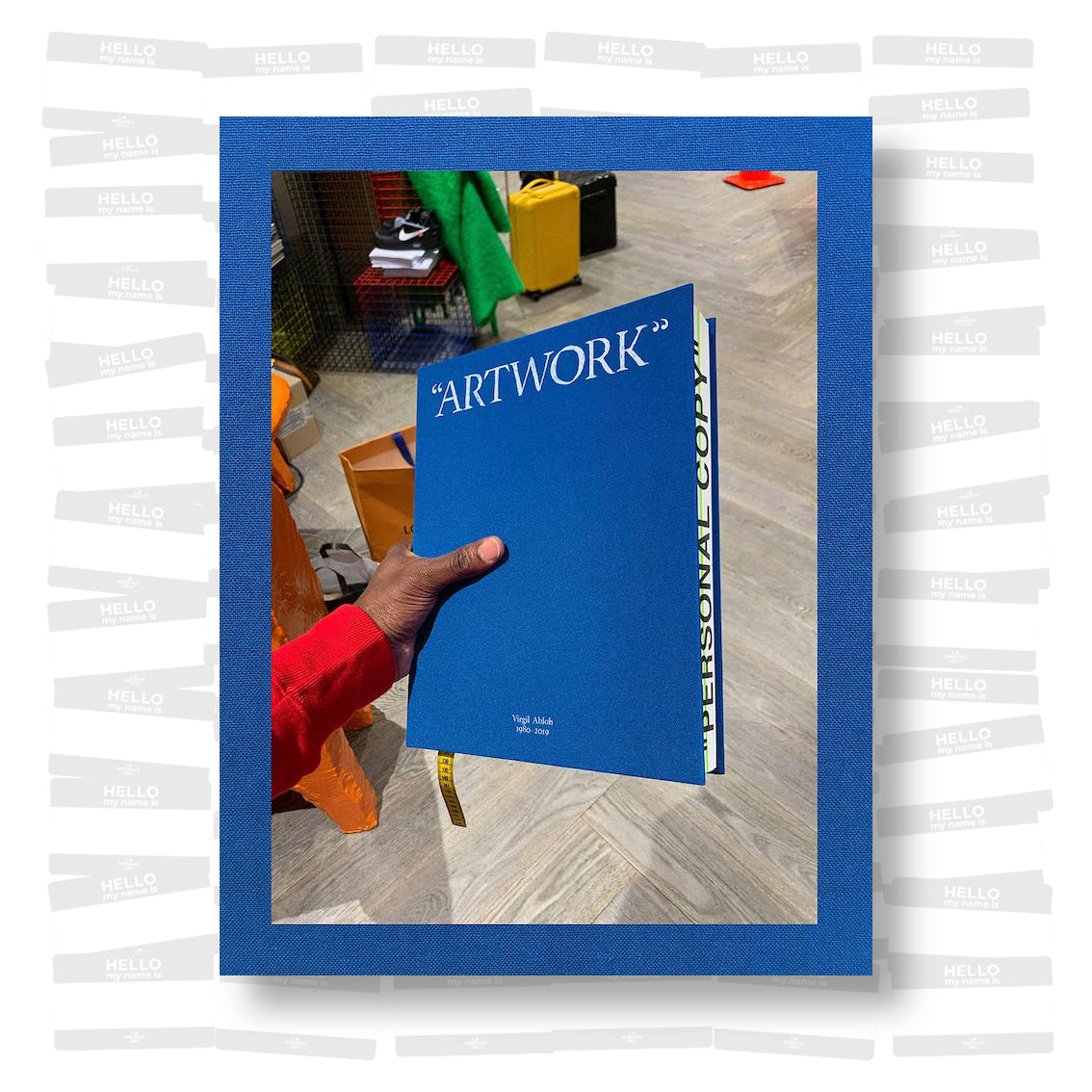
Nike. ICONS (2020)
This volume documents Abloh’s reimagining of ten iconic Nike sneakers in “The Ten.” It combines sketches, text messages, prototypes, and archival material, turning design into narrative. With essays by Nicholas Schonberger, Troy Patterson, Glenn Adamson, and Abloh himself, plus a foreword by Hiroshi Fujiwara, it situates the project within sneaker culture and design history. Blending deconstruction and cultural commentary, the book serves as both catalog and conceptual object, fusing mass-market appeal with avant-garde vision.
Print run: Unknown
Publisher: Taschen
“The foundation of my practice isn’t nearly the end result — it’s [rigour] and process of the logic. The archive is the paper trail of those artifacts. The Icons book is, in a way, the only revealing lens to understand that the catalogue of the 50-plus Nike shoes I have designed are in my mind ‘one shoe’. One story.” (link)
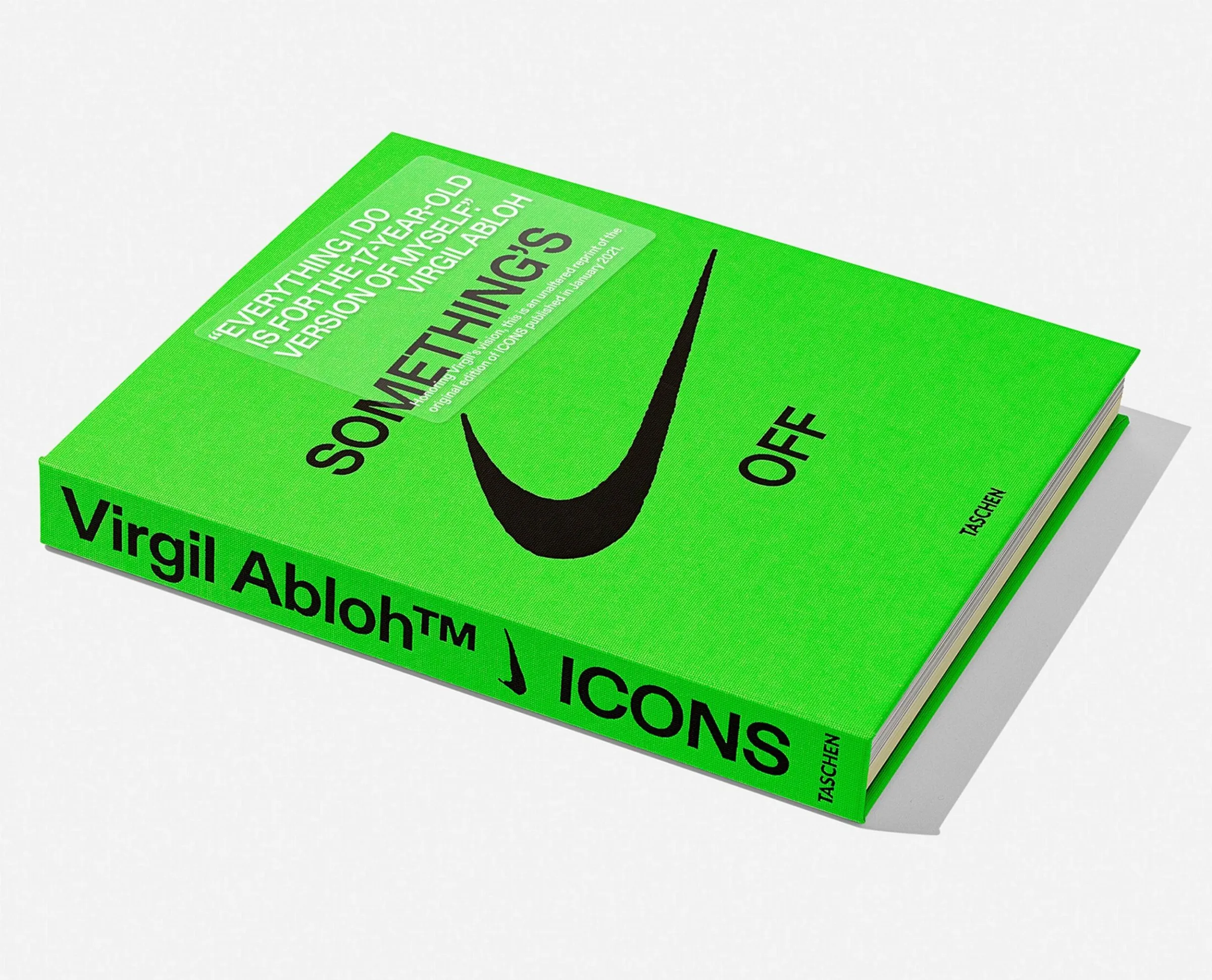
Wallpaper* ‘2 for the Price of 1’ (2020)
Curated by Abloh, this special Wallpaper* issue plays with the magazine format itself. Its matte white cover features only a dotted line and scissors, inviting readers to cut into it—making the object interactive. Inside, mainstream editorial content merges with subcultural irony, echoing Abloh’s knack for remixing formats. Both collectible and playful, it bridges traditional print with experimental design, showing how Abloh treated even a magazine as a conceptual object blurring media, audience, and function.
Print run: 184 copies hand-signed and numbered by Virgil Abloh
Publisher: Wallpaper* Magazine
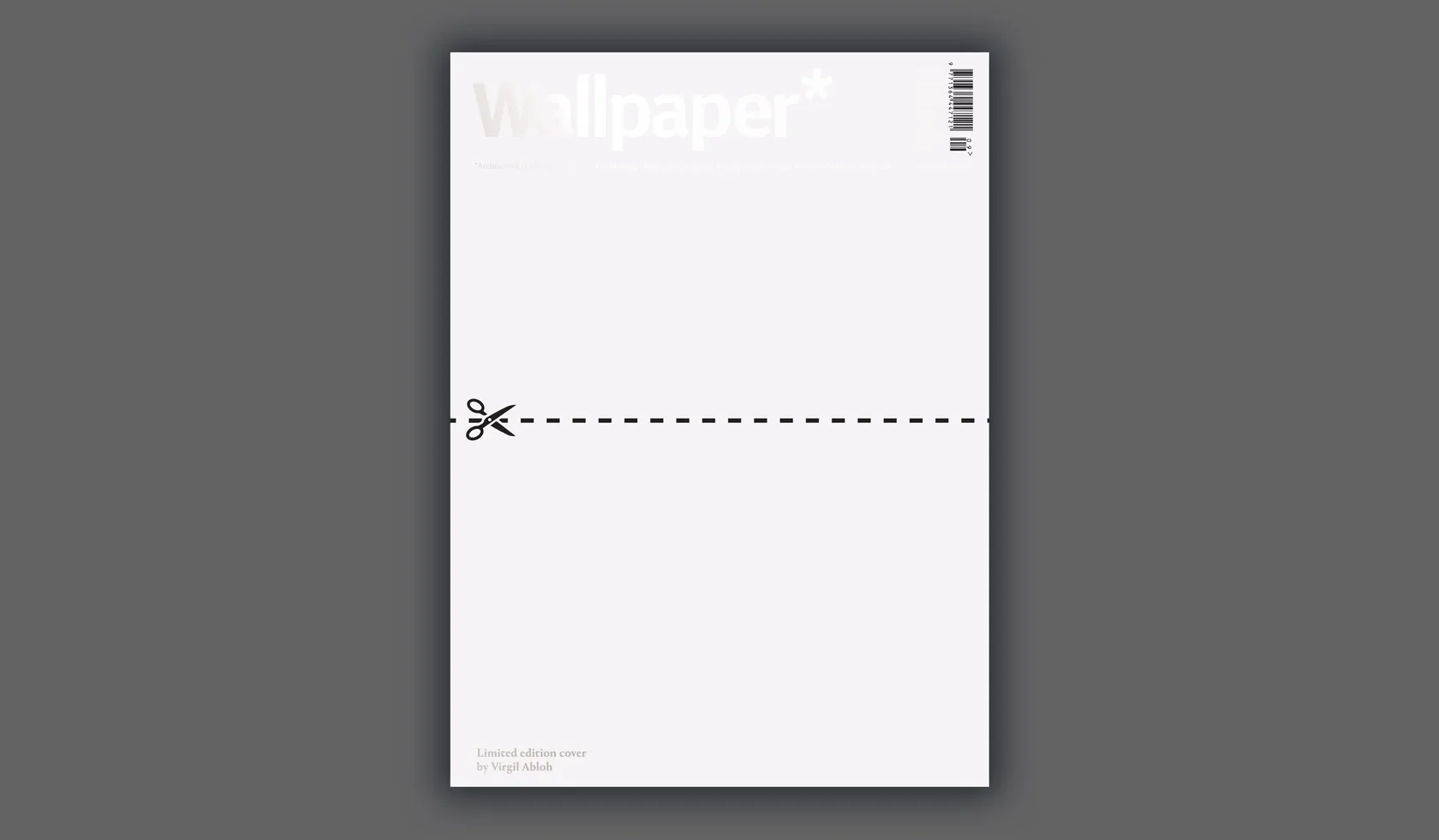
VIRGIL & NIGO (2020)
Created to promote the LV2 capsule, this limited-edition zine fuses Louis Vuitton luxury with street culture. Mixing Japanese and Mod-inspired visuals, it documents the creative process behind the Pre-Fall 2020 collection. With bold graphics and underground zine energy, it appeals to both collectors and fashion insiders. The publication illustrates Abloh’s ability to carry subcultural aesthetics into the realm of high luxury, maintaining his roots while expanding his reach as Louis Vuitton’s artistic director.
Print run: 250 copies
Publisher: Little Big Man
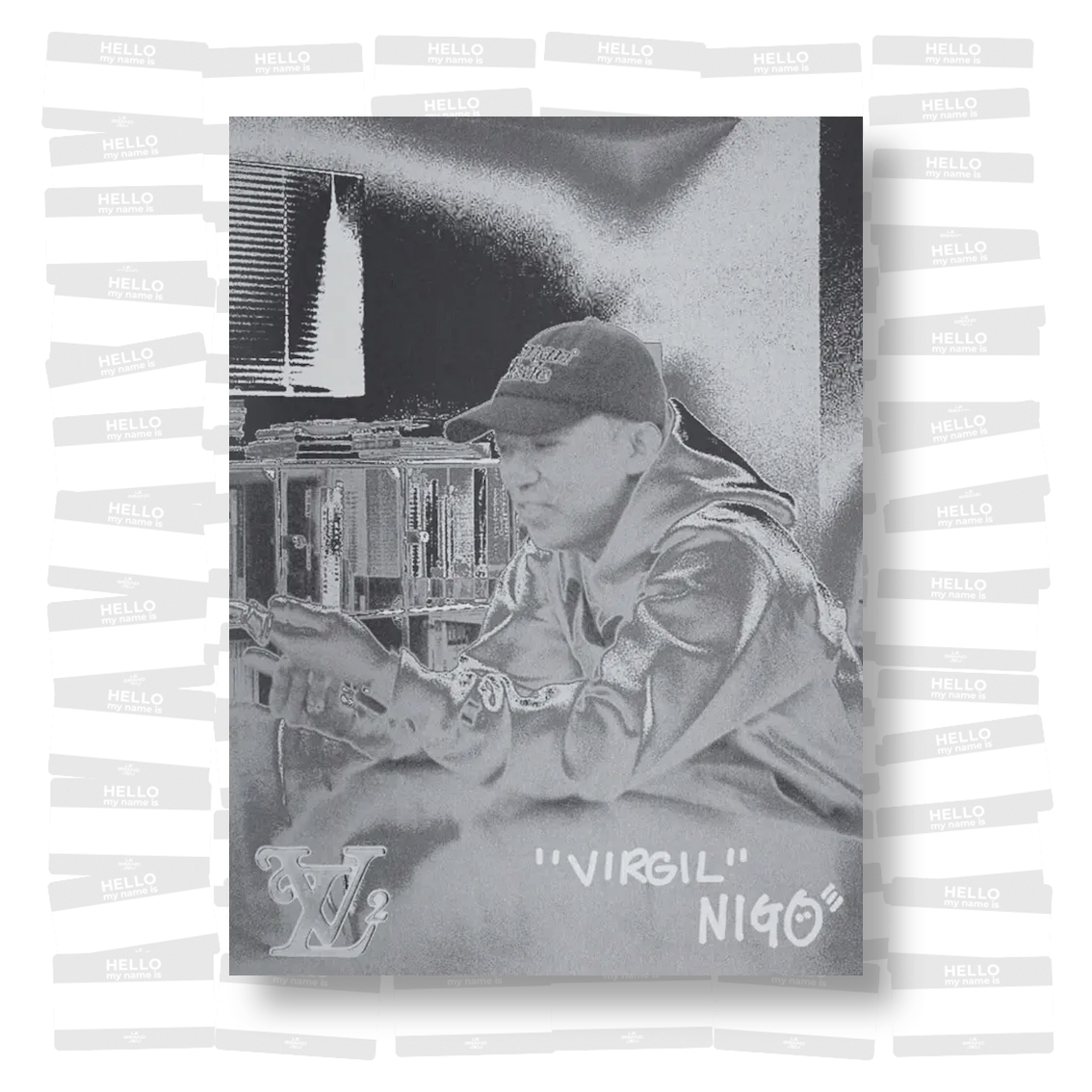
Abloh-isms (2021)
This pocket-sized book distills Virgil Abloh’s voice into sharp aphorisms drawn from interviews and talks. Touching on creativity, collaboration, race, and innovation, it offers concise and thought-provoking statements. Unlike his visually driven publications, this small-format volume serves as an accessible entry point to his philosophy, reaching students, creatives, and general readers alike. Part of the ISMs series conceived by Larry Warsh and published in association with No More Rulers, it frames Abloh not only as a groundbreaking designer but also as a thinker whose distilled wisdom speaks to a new generation.
Print run: Unknown
Publisher: Princeton University Press
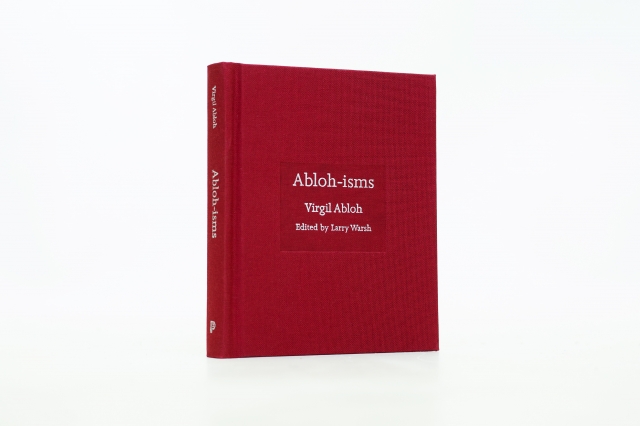
Louis Vuitton: Virgil Abloh (2022)
This luxury coffee-table book celebrates Abloh’s tenure as Louis Vuitton’s menswear director. With over 250 images and contributions from collaborators like NIGO, Naomi Campbell, and Kid Cudi, it documents his influence on fashion and culture. Produced in two editions with distinct covers, it positions Abloh’s work as both art and brand iconography. Unlike Figures of Speech, which Abloh curated himself, this volume offers an external tribute—elevating his work into the canon of luxury publishing.
Print run: Unknown
Publisher: Assouline
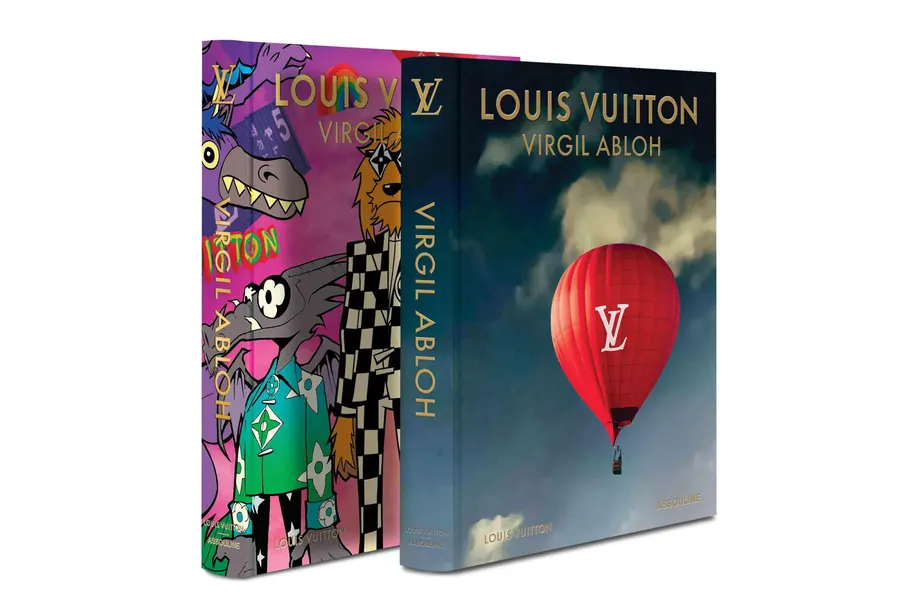
Make It Ours: Crashing the Gates of Culture with Virgil Abloh (2025)
Written by Pulitzer Prize critic Robin Givhan, this biography combines Abloh’s life story with cultural critique. Drawing on interviews with family, collaborators, and contemporaries, it examines how he rose to head Louis Vuitton menswear and reshaped luxury through streetwear. Blending biography with cultural history, the book situates Abloh as both creative force and symbol of systemic change. As an object, it frames his legacy in narrative form, expanding his influence into broader public memory.
Print run: Unknown
Publisher: Crown Publishing Group
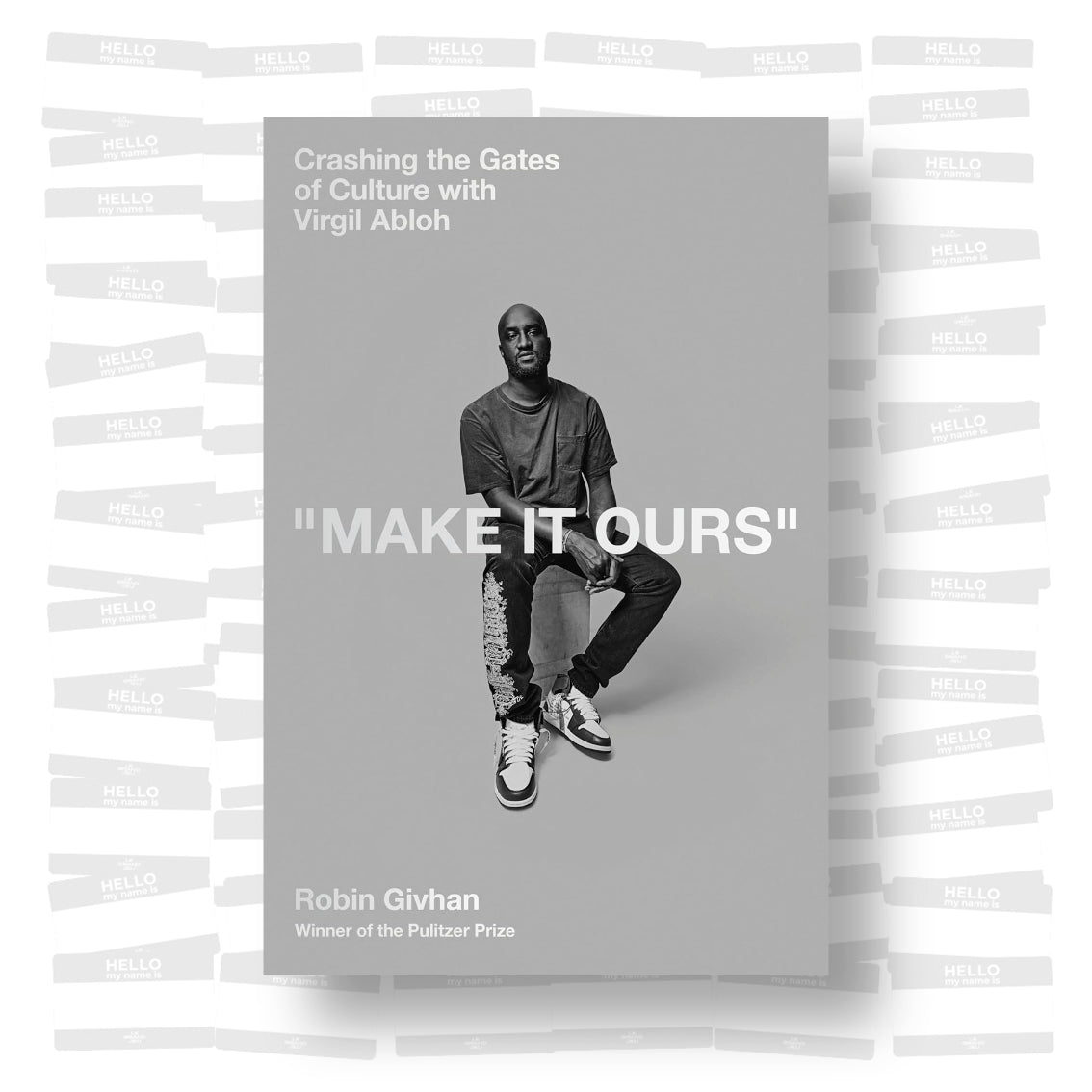
Work in Progress (2026)
Planned as a hybrid work with Anja Aronowsky Cronberg, this forthcoming book blends personal narrative, cultural criticism, and creative theory. Described by Abloh as a reflection on process rather than conclusion, it positions his work as evolving and open-ended. The volume aims to map his methodology, bridging disciplines and audiences, reinforcing his view of creativity as continuous. More than a posthumous project, it represents his enduring belief that ideas are never fixed, only in motion.
Maria Caprara
For a deeper understanding of Abloh’s publishing philosophy, his dialogue with Hans Ulrich Obrist in System magazine No. 10 remains a fundamental reference.
